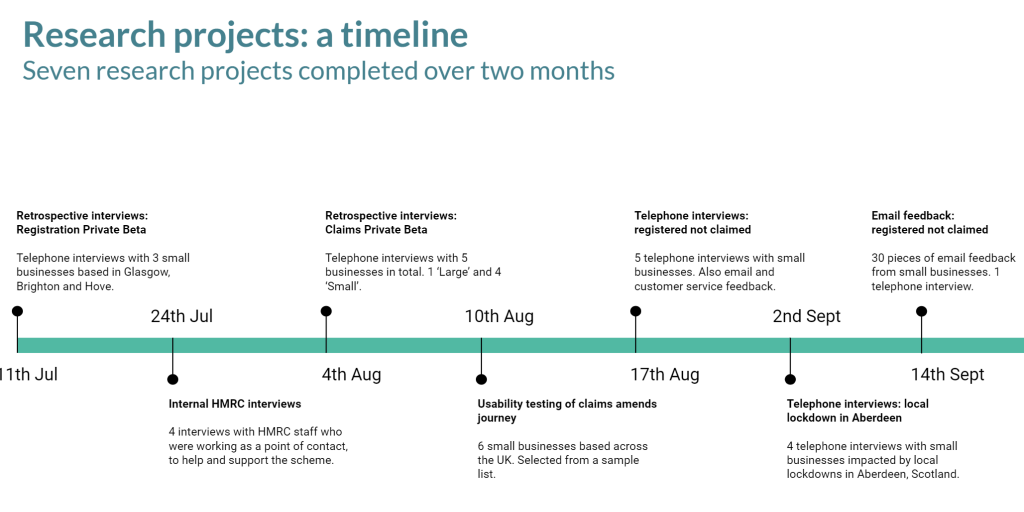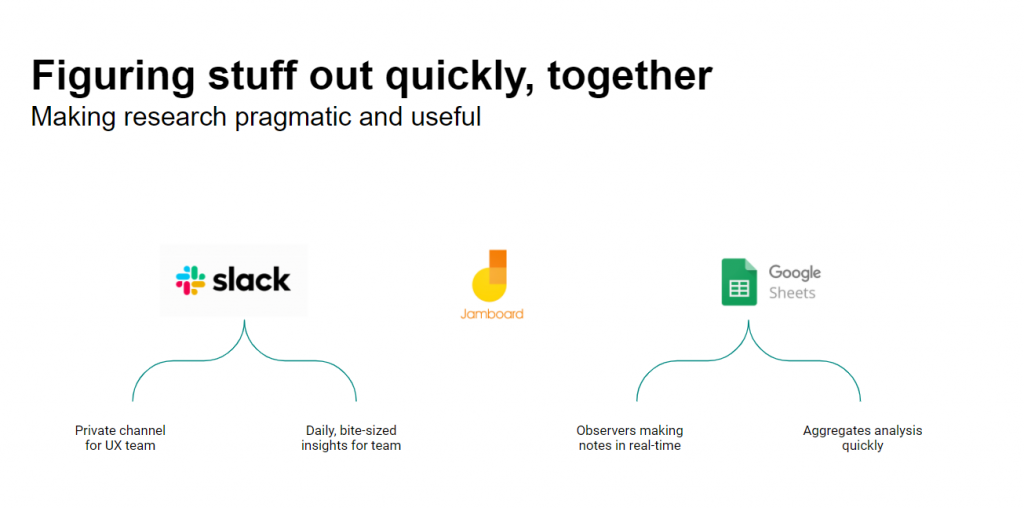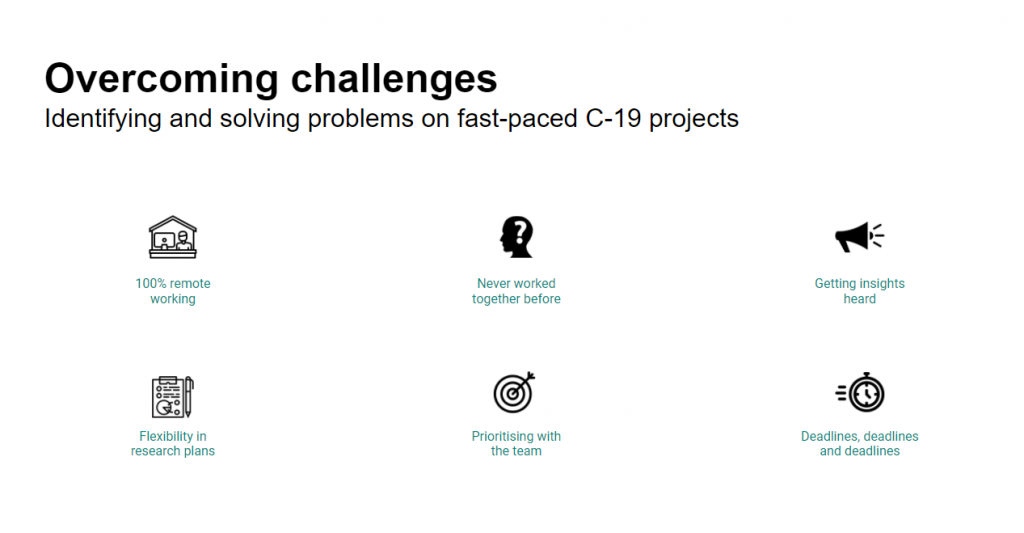I’m Chris Leo, a programme lead working across Policy Driven Change at HMRC. During the COVID-19 crisis of 2020, Policy Driven Change set up multiple digital services, helping millions of people across the UK at a time of need. These services included: Job Retention Scheme, Self-employment Income Support Scheme and Eat Out to Help Out.
We’re going to focus on how we kept a culture of user-centred design at the heart of digital delivery. We’ll take Eat Out to Help Out as an example of how user research can adapt, pivot and empower digital teams to deliver user-centric services under intense pressure and media scrutiny.
So much research, so little time
Below is a timeline of the different research projects we ran on the Eat Out to Help Out service, over a period of 2 months.

The nature of most research projects at HMRC usually means 10 working days to recruit, and then a further 2 weeks of interviewing and insight gathering, typically with 5 people being recruited when it’s all said and done.
But, because of the fast-paced nature of these projects we needed to adapt our research approach to be as quick as possible whilst maintaining quality.
Our Research Services team was instrumental here. They helped us target eligible businesses and sent out recruitment screeners, booking people within a period of 48 hours. This meant daily communication to assess the suitability of users and schedule them in.
You can also see from the timeline just how varied the research was, as we sought to understand the end-to-experience for thousands of businesses across the UK.
Drowning in data, digging for insight
When you have a wealth of research data, the challenge then becomes making it accessible to the team so that they can act on it.
We were doing so much research, the problem was no longer about finding users, but making sure the insights could be understood and acted on quickly.
In order to do this, we needed to repurpose some of the existing tools and processes at HMRC, to ensure the research was pragmatic and useful.

This meant for Slack, creating a secure and private channel for the UX team where we could freely discuss changes to interaction and content design. To bring the wider team closer to the insight, we also posted daily updates in the project team’s Slack channel.
At the same time, we wanted to make sure our insights from the usability testing were visual and could be easily iterated upon. We opted not to go for ridgid Google Slide reports, but instead used Jamboards to show the insights by users across each prototype iteration.
To ensure we had evidence to make our decisions with confidence, we documented everything in Google Sheets from each interview session.
Google Sheets also allowed us to aggregate our analysis quickly, easily comparing themes across different cells. This helped get our analysis out at pace to the team as well.
So, we were using tools at HMRC in a way that allowed us to do this kind of pragmatic and quick type of research that the team needed.
With a little help from my friends
Like with any project with intense time and resource pressure, there were challenges to overcome.

Working remotely meant we had to be precise in our language when communicating insights, because we lacked all the typical behavioural and body language cues we usually have when presenting.
Ice breakers were important as we had never worked together before. Especially the roles we play game, which helped to strengthen relationships across the team.
To get the insights heard we needed to make them visible every single day for the team to act on. We didn’t want to wait for a ‘big reveal’ 2 weeks later in a show and tell.
We had to create a lot of research plans for these services, averaging once a week, and we needed to be open-minded in how we wrote them, based on the team’s dynamic objectives.
Working with the team and especially the product manager, we needed to keep the research focused and prioritised each week, so every interview had the potential to add value.
What was it all for?
In the end we registered 84,700 businesses for the Eat out to Help out scheme which made 130,000 claims. The total value of these claims exceeded £522 million.
As researchers, we learned how to gather insights at speed, working in one-week sprints. We adapted existing HMRC tools to deliver the voice of the user to our project team every day.
Due to our consistent stream of user feedback, we were able to influence key service design decisions. This meant setting up Eat Out to Help Out quickly and with exceptional user experience. If you have any suggestions to help improve our digital services, then let us know in the comment section below.
Come work for us!
If this work sounds interesting, check out all our current digital vacancies. They’re updated regularly so worth keeping an eye on.
To make sure you don’t miss any of our blog posts, sign up for email alerts
1 comment
Comment by Mems Bangura posted on
Hi Oscar, I'm glad you found it interesting. Please check out our contact HMRC page - https://www.gov.uk/contact-hmrc for the best way to get in touch with the right team.
All the best with your freelancer platform.
Thanks,
Mems